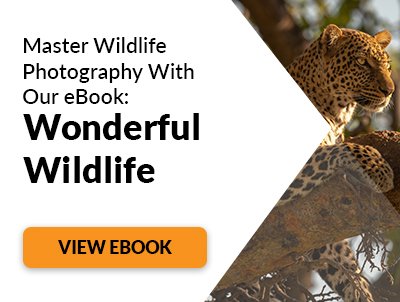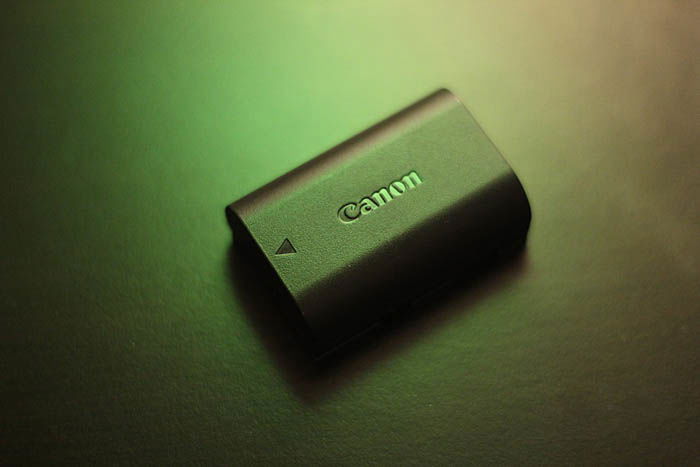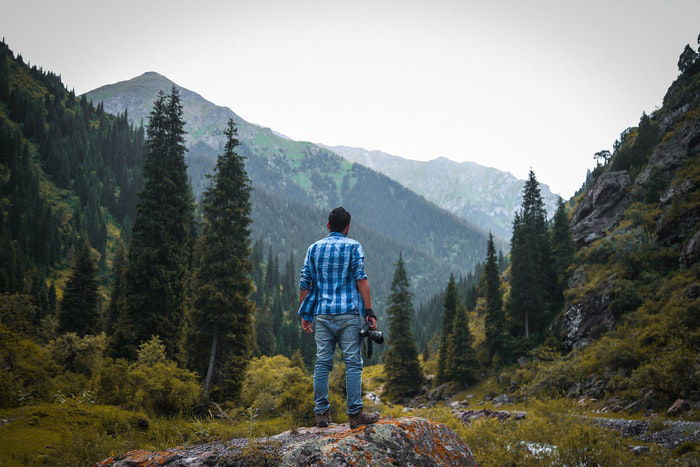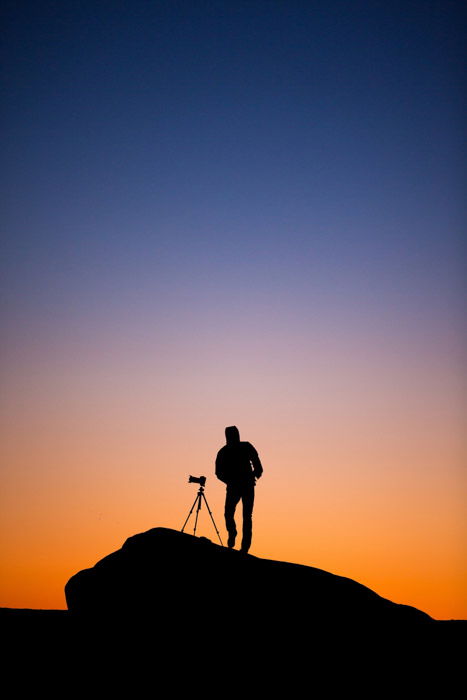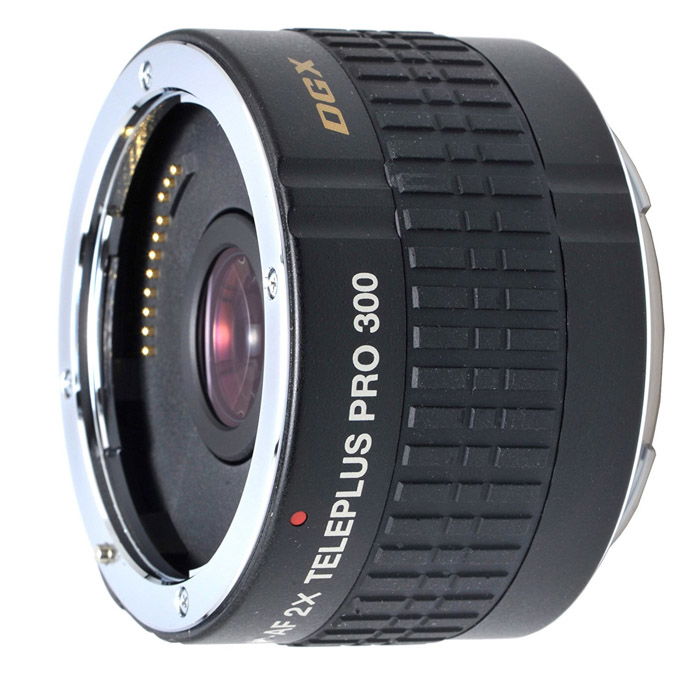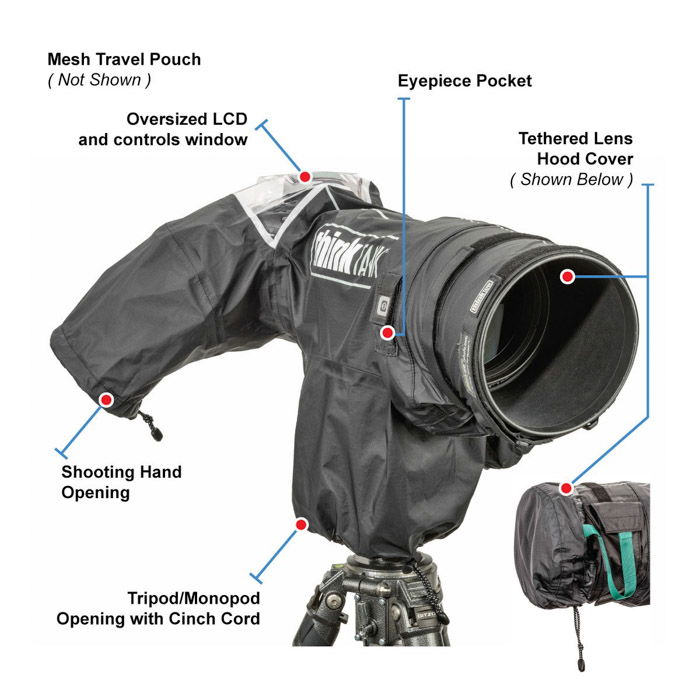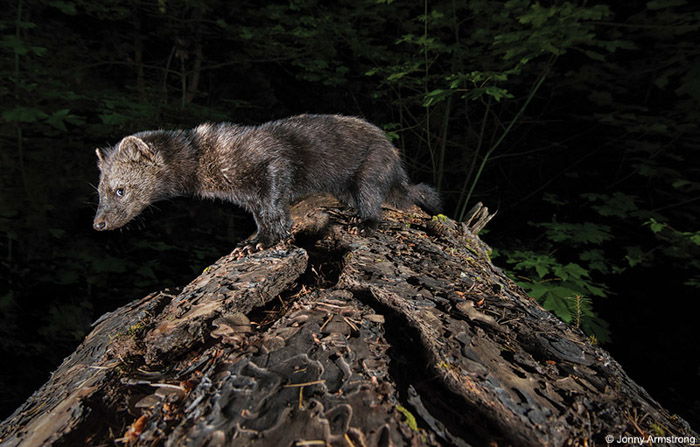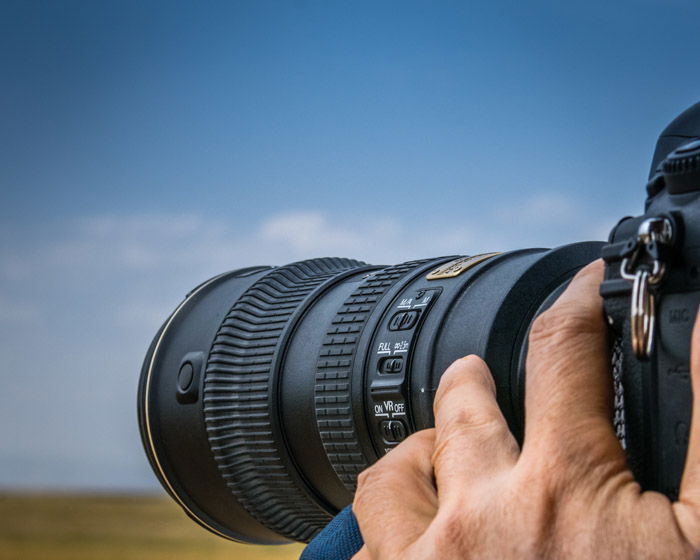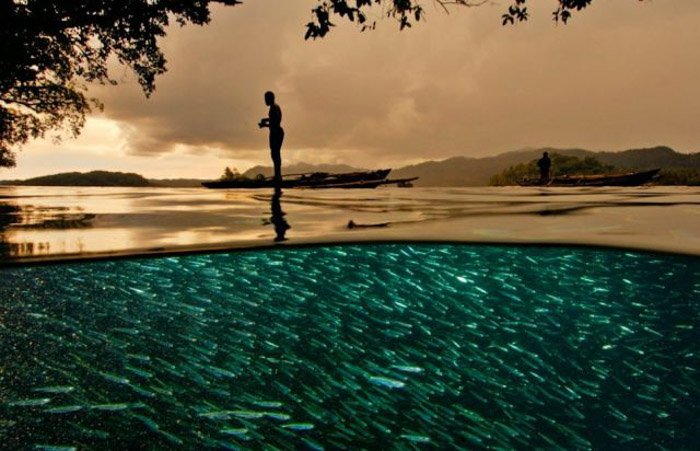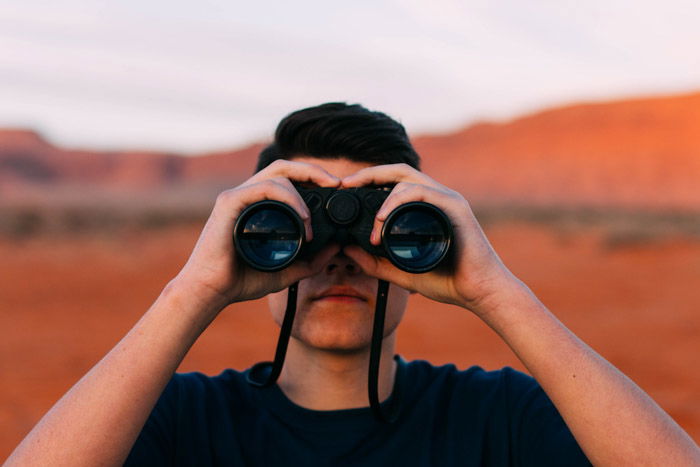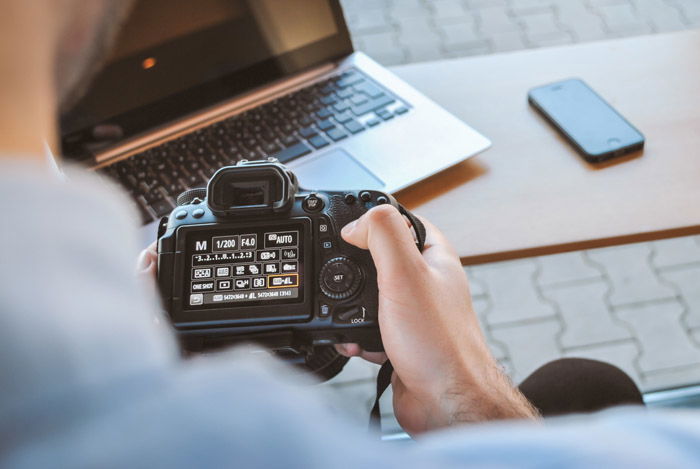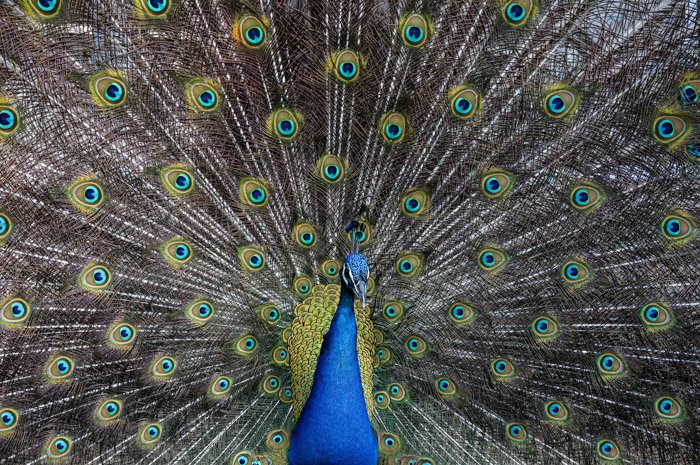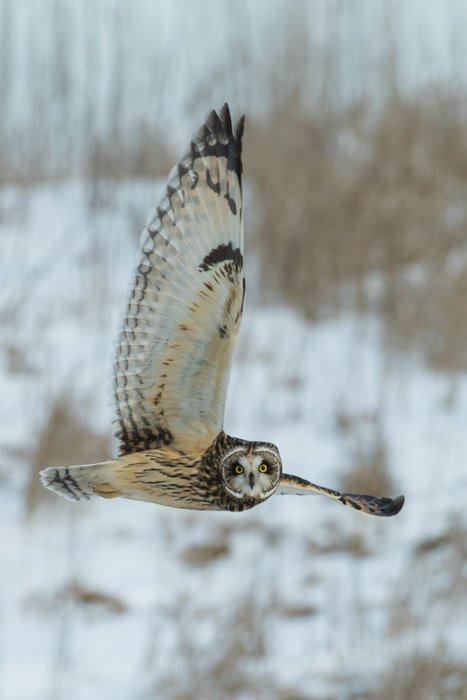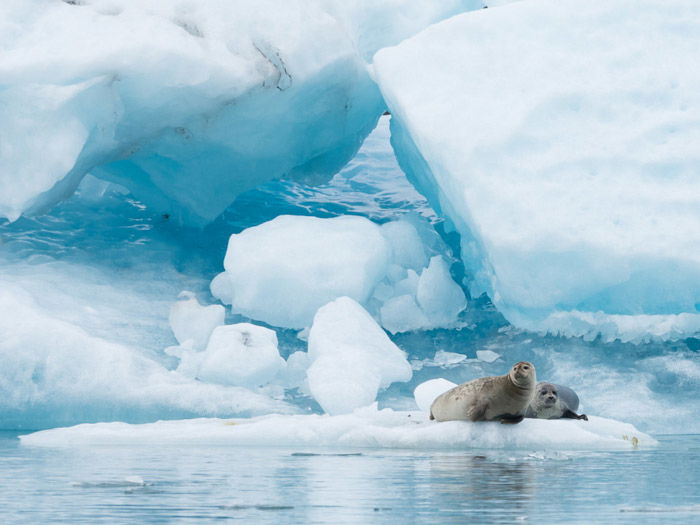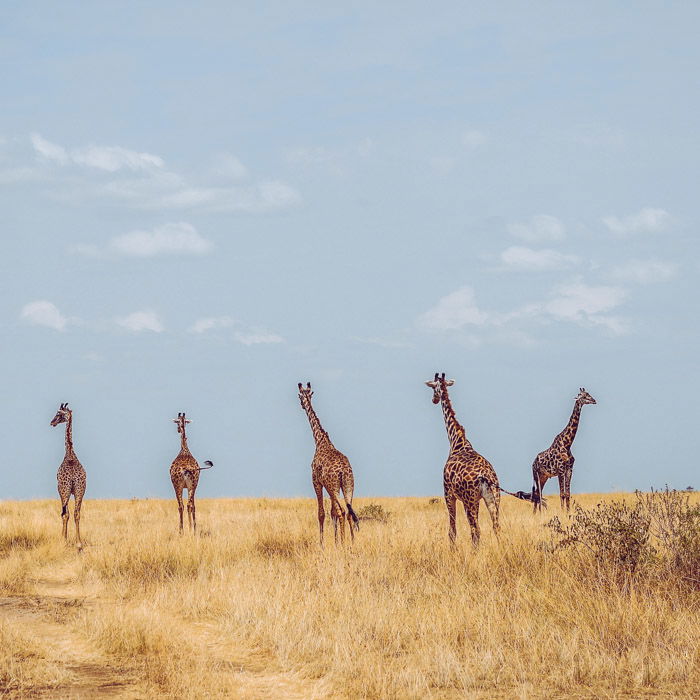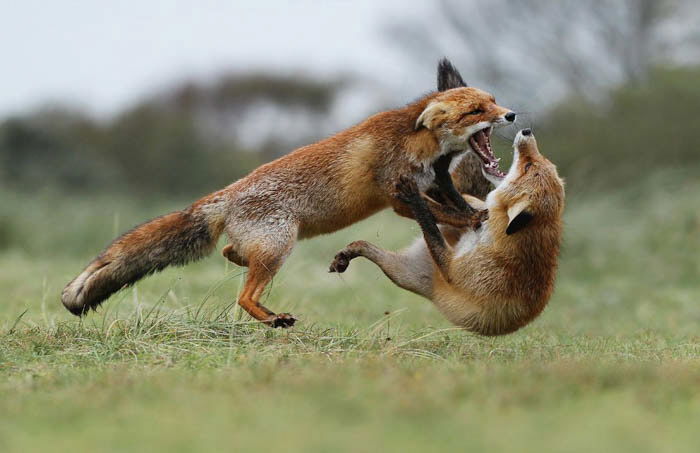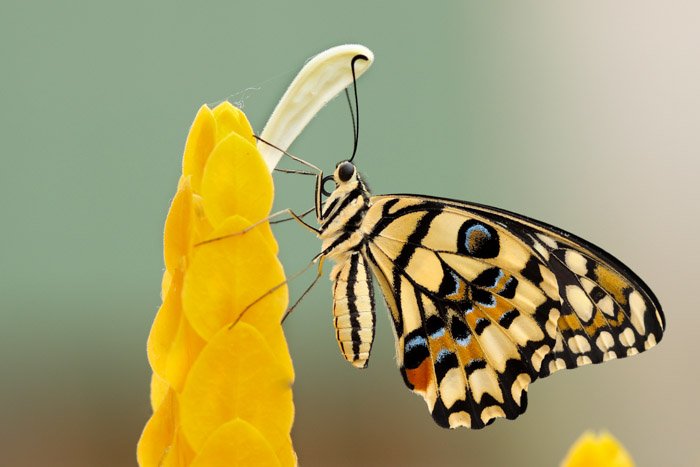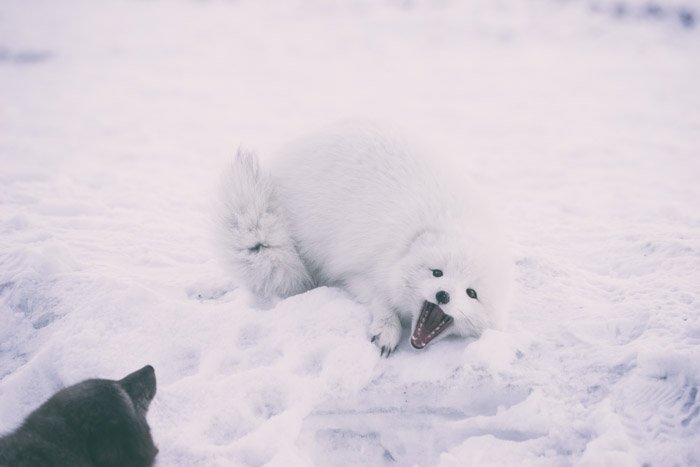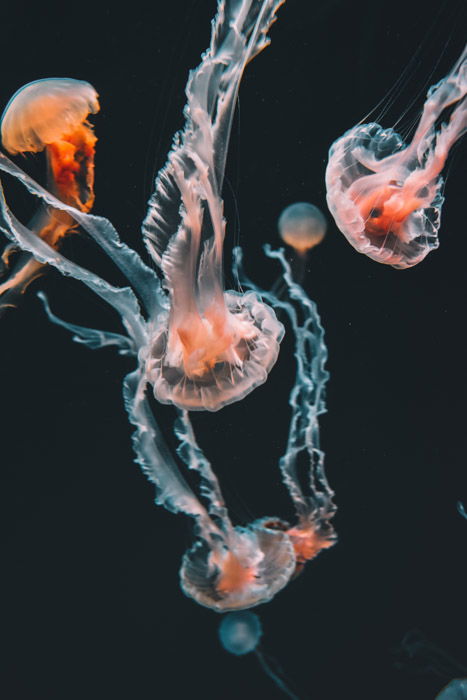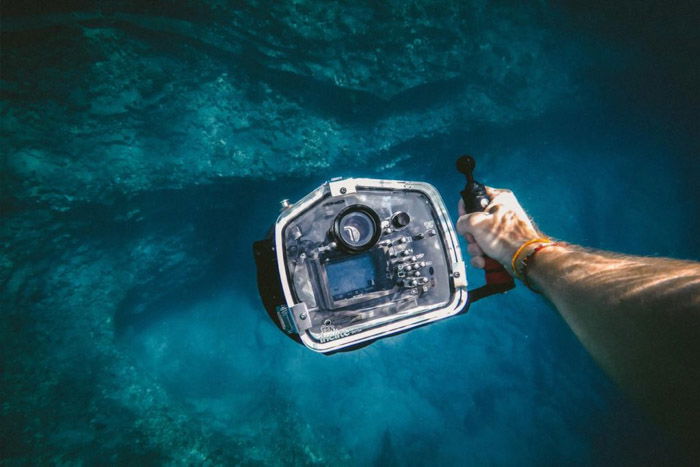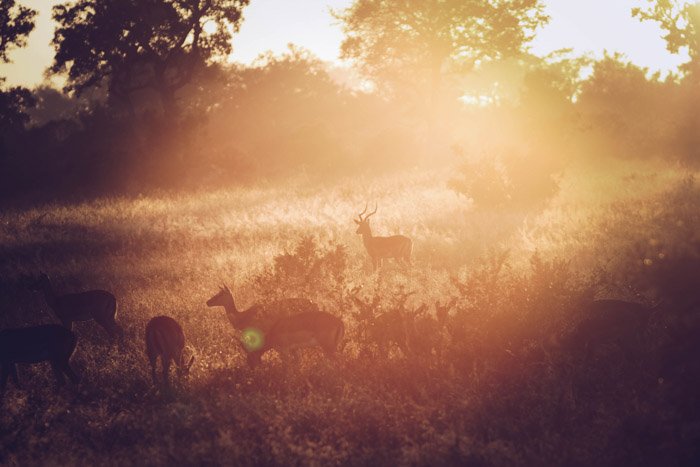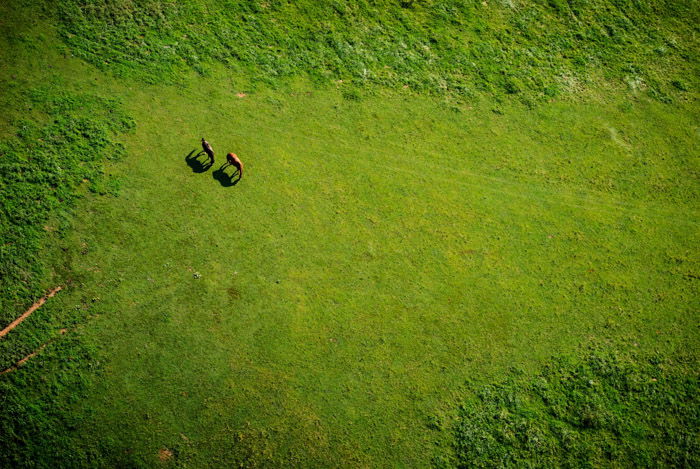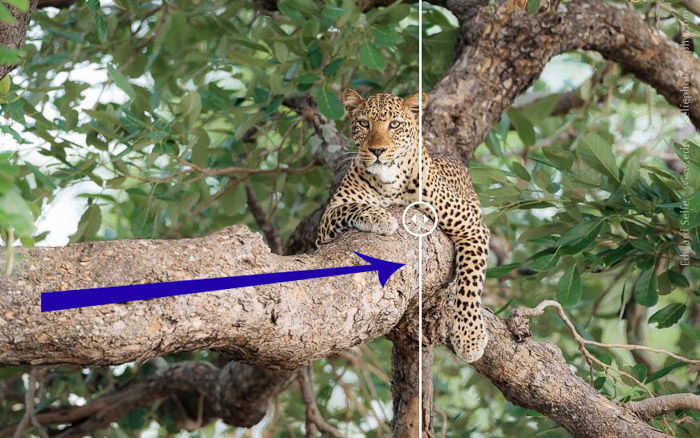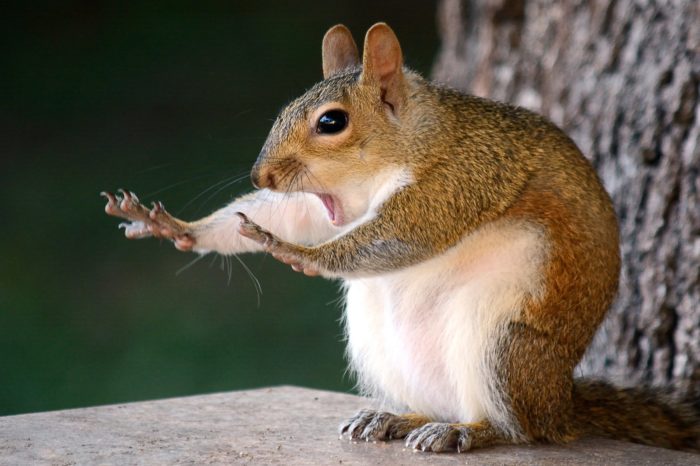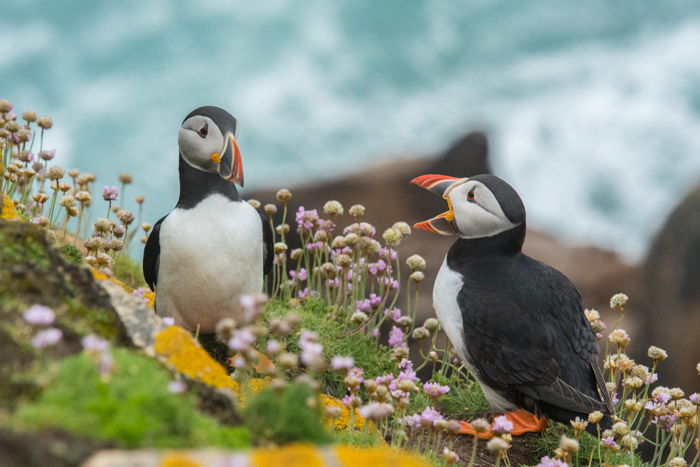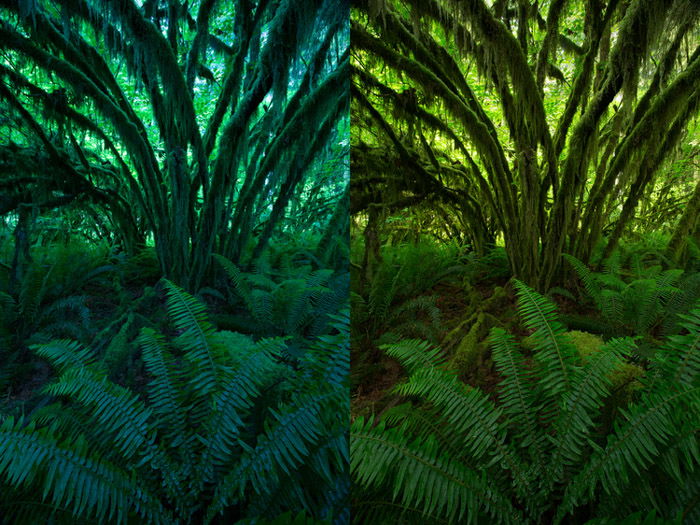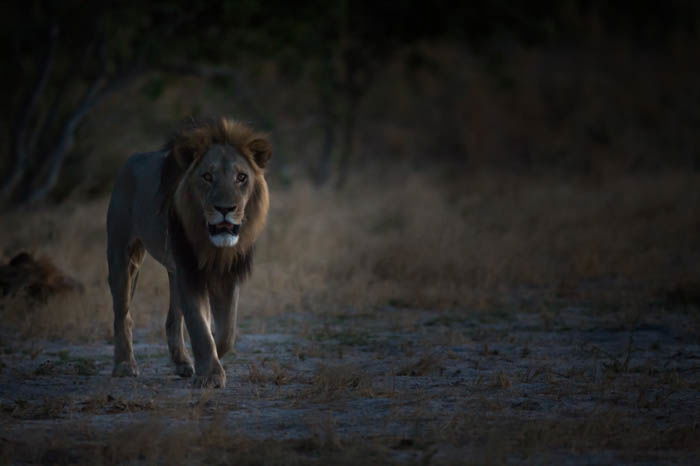Read this complete wildlife photography guide for everything you need, from gear to techniques. [Note: ExpertPhotography is supported by readers. Product links on ExpertPhotography are referral links. If you use one of these and buy something, we make a little bit of money. Need more info? See how it all works here.]
What is Wildlife Photography?
This is one of the most challenging areas of photography. You are dealing with animals that don’t take model direction. Not only do you need to have superb technical skills. You must also know how to expose, frame, and compose well. You will find that some animals are approachable to some extent, and others will require a telephoto lens to get any photographic evidence. Safety for the animals and yourself is key. Never put yourself or any wildlife in harm’s way to get a great image. Protect the animals in their habitat, too. If you are wondering how to start your wildlife photography journey, keep reading. We will discuss what to look for in wildlife photography and how to improve with a few simple ideas and compositions. In the end, we shall look at the post-processing side of things. This area makes sure that your images are as good as they possibly could be. Have fun, experiment, and keep practicing. Your images could one day win wildlife photography awards!
Camera Gear
Best Cameras for Wildlife Photography
Your camera is your tool for capturing amazing wildlife photography. Any DSLR will capture images, but a few specific settings will definitely help you. The ability to shoot RAW is one of the most important tools your camera needs to have. RAW images will give you significantly more details to play with than jpeg. They are more than eight times bigger in terms of size, as they hold much more data. Any local adjustments are changed without loss of quality. Read our list here for the best cameras for wildlife photography.
Best DSLRs
Chances are that you will own and mainly use a DSLR. They offer you the most amount of settings, lenses, and accessories. DSLRs are also better at auto-focusing, fast and continuous shooting, and high ISO capabilities. All of these are perfect for capturing moving subjects in wildlife photography. For the beginner, the Pentax K-3 II is a solid choice. This camera comes well protected from the elements with its 92 seals. It also has image stabilization for those moving animals. Read a full list of DSLR recommendations here.<img class=“aligncenter wp-image-25528” src=“https://expertphotography.com/wp-content/uploads/2018/04/wildlife-photography-pentax.jpg" alt=“A Pentax K-3 II is DSLR for wildlife photography” width=”550″ height=”550″ />
Accessories for Wildlife Photography
Top 9 DSLR Accessories for Wildlife Photography
If you are serious about wildlife photography, you will find that your images will benefit from more than just your camera. Accessories help you take better images. They help you stay comfortable so you can stay out, photographing for longer. The accessory you won’t be able to live without is a bag. It allows you to carry all your photographic gear and other items, such as clothing and binoculars. Our recommendation is the YAAGLE Oxford backpack, which lets you carry two telephoto lenses together. It even has space for all your other items.
Remote Shutter Releases
You might not want to photograph some animals using a 50mm lens. You can’t even get close enough to some animals to photograph them. The solution to this is a remote shutter release. This allows you to release the shutter without touching the camera. This piece of equipment is also great for long exposures. Touching your camera while the shutter is open for extended periods could create camera shake, ruining your image. That is the last thing you want for that once-in-a-lifetime shot. Some are wireless systems. And others don’t require batteries and cost less than $10.
How (And Why!) to Use a Camera Bean Bag
A camera bean bag can be extremely helpful in wildlife photography. It is helpful to use in scenarios where a tripod won’t work. For example, you can place it on a fence post, a rock, or the ground. Many times, it is easier to shoot from your car. A camera bean bag helps stabilize your camera and still take sharp photos without a tripod. In addition, it is easier to get down really low on a camera bean bag than on a tripod. Read the rest of this article for how else a camera bean bag is useful and how to make one at home.
How to Dress Properly for Wildlife and Nature Photography
Clothing is one of the most important areas of wildlife photography. They will protect you during the harshest weather conditions. They will keep you warm when it is cold and dry when it’s rainy, like in England in April. You will need to know what conditions you may encounter so that you can dress accordingly. These clothing items have extra pockets for a small amount of gear needed at a moment’s notice. The more comfortable you are in the wild, the higher the chance of your happiness. This means staying out longer and taking stunning wildlife images. Read more about our clothing recommendations here.
Wildlife Gear on a Budget
When you are starting a new field of photography, you don’t want to spend all your money. At least not until you are sure you will stay interested. This is why we suggest this list of gear items for those on a budget. One area that can really save you money is a teleconverter. This small, lens-shaped item fits between your lens and your camera body. Its purpose is to multiply the focal length of the lens you use alongside it. For example, if you use a 24-70mm lens, a 3x teleconverter will turn the lens into a 72-210mm lens. You now have a telephoto lens without spending money on a telephoto lens. Neat, huh?
Essential Gear for Wildlife Photography
Many equipment items will really help your wildlife photography. Where, when, and under what weather conditions are important questions. A lens rain cover will protect your camera and lens from harsh weather conditions. This allows you to shoot outside without worrying about your equipment. Other essential pieces would include a tripod, ensuring images are free of camera shake and allowing you to work in low-light conditions.
How to Use Hides
Invisibility is possibly the most desired attribute for photographers across all photographic fields. Imagine the photos if this were possible. Hides are a great way to make yourself unseen to the naked animal eye. They come in all shapes, sizes, and camouflages. A great possibility is a canvas dome hide. This system is fast to set up and easy to transport and move in case frustrating birds fly away. Read more about the available choices and how they will help your wildlife photography.
Camera Traps and Techniques
Camera trapping provides many advantages. It is placing your camera in an animal’s habitat and leaving it, sometimes overnight. Shutter release happens through motion detection. Either through active infrared (AIR) or passive infrared (PIR) beams. They allow you to enter and photograph an animal in its natural state without disturbing its environment. Read all the information you will need on camera traps and techniques in this article.
Lenses
How to Choose the Best Lens for Wildlife Photography
Sorry to burst your bubble, but wildlife photography has no best lens. There is only the best lens for your wildlife photography. It all comes down to what you will photograph with the lens. If you are photographing animals in motion, then a fast lens is what you will need. A wide-angle lens will suit you better if you aim to capture an animal in its natural habitat. If you already have lenses, you may not need to invest much or at all. A teleconverter can extend your lenses into something closer to a telephoto lens.
What is a Telephoto Lens?
A telephoto lens will get you closer to your subject. This is great for photographing those animals that have a taste for wildlife photographers served fresh. It also allows you to close the gap between the subject and the background, which gives an interesting perspective. Prop your camera on a tripod, and get closer to the action without risking any limbs. Typically, telephoto lenses range anywhere above 85mm. Any lens that can reach a focal length of 300mm or more is a super-telephoto lens. Both range from affordable to very expensive. If you don’t think you will use a telephoto lens a lot but want to try it out, get a teleconverter. If you’d prefer to stay away from the action, get the lens and bask in safety.
When to Use a Wide-Angle Lens
An interesting lens option is a wide-angle lens. These typically have a wider field of view than standard lenses. If a standard lens is 50mm, then a 35 and 24mm lens are slightly wide-angle. For the real benefit, you need to look at lenses of a focal length between 11 and 24mm. The field of view for these ranges from 84 to 120 degrees (120 degrees is a third of a 360-degree panorama, just to put it into perspective). These lenses will give you some distortion, especially closer to the edges. This is due to the sensor trying to squeeze in all the extra field-of-view information.
Choosing Scopes and Binoculars
A great way to spot and follow birds and animals is by using scopes or binoculars. This saves you time and effort, so you don’t have to pack up and move each time the animal does. They allow you to see them from afar without disturbing their natural habitat or daily life. This way, you can ensure they are not just posing for the camera. Most wildlife photographers use at least 8x (magnification eight times) binoculars. The larger the magnification, the more trouble you will have keeping it steady. They can cost anywhere from $100 to $2000, and the scopes can cost even more. Secondhand is also a viable option for those on a budget.
Camera Settings
Preparing Your Camera
Making sure your camera is prepped correctly saves you valuable time. You want to tweak your camera settings while photographing, not starting fresh. This could get you that perfect shot where the other version of you is still moving the dial back to ISO 100. One area that you shouldn’t overlook is aperture priority (A, Av). This tool allows you to set the aperture, and the camera changes the shutter speed automatically. This way, you only need to worry about what aperture you want to shoot with. This can save valuable time, rather than trying to change everything manually. Do this when you first get to a location, even before seeing any animals. Use the light around you to get the settings you need. Read here for all the details you will need.
Best Camera Settings for Bird Photography
Bird photography needs a different set of skills. They spend their time in the air and prefer to hide away on top of buildings or in trees. Birds tend to be fast and dramatic when they are out in the open. Auto ISO combined with a minimum shutter speed will work wonders. Auto ISO means that your camera will choose the ISO automatically. It will change as needed. As the light changes and the scene becomes brighter, this will drop, and vice versa. A minimum shutter speed comes down to what you choose. If you choose 1/1000 s, the ISO will set itself accordingly.
5 Camera Settings to Improve Your Wildlife Photography
You can utilize many camera settings for all kinds of captures, not just wildlife photography. You might feel a little overwhelmed at first. We recommend not getting caught up in all of these settings in the field. You will waste valuable time in doing so, missing many great shots. Use the programmable custom function buttons for help. Preset these when you get to a location with a few different variables. Let’s say one with a wide aperture (f/4 instead of f/16) and another focusing on shadowy areas (-2 EV). This way, you can change your settings in one simple move. Read here on how to do that and four other great ways to improve your wildlife photography.
Specialized Autofocus for Action
Autofocus is a godsend. For fast-moving subjects, AI Servo (AF-C on Nikon) works well as it keeps track of where your subject is moving to. It is continuous autofocus. And it refocuses every time the subject drops out of focus. You can even make a custom preset so that your wildlife photography is at its best. Read here for how to do that.
How to Start Wildlife Photography
10 Reasons to Try Wildlife Photography
There are plenty of reasons why you should try wildlife photography. The number one reason is that it will be challenging. So you will learn a great deal. Because there are many niches for photographing wildlife, there is something for everyone. It has a big enough variety for photographers with different skill sets. Humans are very much still connected to nature. We are fascinated by it. Wildlife photography offers us that step back into nature. For the other nine reasons why you need to start, look here.
Wildlife Photography Tips (How to Shoot Great Photos of Animals)
When you think of wildlife photography, you imagine a shot of two Bengalese tigers fighting over a fresh carcass. But most of the best wildlife photography is of common animals. They might be in their natural habitat or foraging for food. So don’t let the fact that you aren’t around exotic, endangered species stop you. Many elements make a great wildlife capture. One is to respect the animal and its habitat. This means that you need to put yourself in a position where you do not create any stress for the animal. This might be successfully hiding, keeping your distance, and not running up to them asking for a dual selfie. Animals aren’t into the whole Snapchat thing. Another one of the biggest tips on how to take great pictures is to get low. Change your perspective to that of the animal for a look into their world. Read our extensive article for 14 great tips. They will help you become a better wildlife photographer.
Bird Photography Basics: How to Take Great Photos of Birds
Birds are some of the most challenging subjects in wildlife photography. They are fast, nimble, and spend most of their time in the air. Heaven forbid that they may sit still for a few seconds. So you must align, frame, change the settings, and shoot the creature with god-like speed. Check the background if that image doesn’t work as well as you imagined. Perhaps it is taking away the power of the shot? So our tip for bird photography is to not forget about the background. The picture will fail as fast as lightning if it steals the birds’ thunder.
On Safari: A Guide to Unexpected Photographic Challenges
Going on a safari can be an exhilarating experience to get fabulous wildlife photos. But there can be many unexpected challenges, too. For example, the heat, harsh light, and dust. Not to mention that most of your shots will be taken from the back of a safari vehicle. Read this article to be prepared and get helpful secret tips… like why you should take two cameras and how to take photos in bright light.
Improving
Improving Your Wildlife Photography
There is always something we, as photographers, can do better. Either it is our weakest skill, or we are moving from a different area of wildlife photography. The more animals you photograph, the more you realize that action is a huge part of this field. We need to freeze these moments that the animals give us. The fast action is best captured with a fast shutter speed. This allows you to freeze the moment without motion blur. 1/1000 s or higher is perfect. Read our other tips here on how to improve your wildlife photography.
Macro Wildlife Photography
Another way to capture wildlife photography is to utilize macro photography. This field allows you to get really close to a subject. The use of a macro lens or the use of a macro converter creates macro photography. It is even possible to reverse the lenses you already own. This type of photography is perfect for insects and capturing details of animals. If you can get them to stay still, that is. Read this article on how to successfully utilize macro in your wildlife photography.
Transform Your Landscape Photos with Dramatic Weather Photography
Extreme weather conditions can make you feel “argh” about having to go outside to photograph. Just know this is a great opportunity to capture great shots. For one reason, many other photographers will stay home drinking hot cocoa. This reduces your competition, allowing you those unique images. You will need to dress appropriately. Your gear needs to be protected overall, and your comfort level needs to be somewhat high. Read all the information you need for extreme weather conditions. It also gives you tips on how to look after your gear.
Underwater Wildlife Photography
Getting Started
Underwater wildlife photography can provide close-up opportunities of animals and creatures that other people don’t often see. Nowhere else can you approach so many different animals in the same environment. One of the biggest things to consider here is the light. Ambient light is a great light source, but it works best close to the surface. Artificial lighting allows you to go to deeper depths. Read more about how to get started in underwater wildlife photography.
12 Best Waterproof and Underwater Cameras to Buy
Underwater cameras are made specifically for taking photos under the ocean, sea, and even lakes and rivers. They open up the way to explore a whole new world. But out of the many available cameras in the market, which is the best for you? The Fujifilm FinePix XP130 is the best value for the money. But our top pick would be the Olympus Tough TG-5. Check out this article to find out why, and see the rest of the list of the top 12 underwater and waterproof cameras.
Underwater Photography Gear
Obviously, do not get into the water without finding a way to protect all your camera gear. That would be a very expensive mistake. Camera housings are not cheap. They need time and knowledge to maintain, but they are necessary items. There are waterproof cameras that allow you to photograph up to certain depths. But they don’t offer you the same control as a DSLR or mirrorless system. All the information you need is here, in this article.
Aerial Wildlife Photography
Using Drones Without Disturbing Wildlife
As photographers, we are always trying to create more and more interest in our images. One way to accomplish this is to change our perspective. A drone offers you this unique change in perspective, looking at wildlife from a different angle. An aerial photograph is interesting as we humans rarely see the world from the top down. A new way to look at the world creates stunning results.
6 Tips on Wildlife Photography From a Helicopter
Another way to photograph animals from the top down is with a helicopter. This is not a cheap way to photograph, but it is special. To get effective images from the eye in the sky, you really need to know your camera equipment. This is before setting out on that high-flying machine. You will need to work fast. Keep your eyes open. And check both sides of the helicopter because the east and west will differ greatly. Read here for all the tips on capturing great photographs from the sky.
Compositions in Wildlife Photography
Composing Your Images
Compositions relate to how the objects and subjects are put together or “composed” in the frame. We are in control of how all of the visual elements connect. This is down to your physical location, perspective, and camera gear—namely, your camera and lenses. The composition that most wildlife photographers use is the rule of thirds. This is a go-to composition to make the image more interesting. Using negative space is also a great way to frame a scene. Negative space pushes the focus toward the subject and makes the animal stand out more. Read more here and give it a go on your next expedition.
10 Uncommon Photography Compositions
With composition, photographers tend to go for the same again and again. Break the cycle and start utilizing other compositions that many others overlook. One way to look at a scene is by focusing on the light. Wait for the subjects to approach the scene instead of trying to work around the subject. This gives you something unique and has your viewers eager for more.
Our 15 Favorite Shots From the Comedy Wildlife Photography Awards
You’d be lucky to see an animal make a funny expression, but you’d be even luckier to capture it. Taking funny animal pictures seems almost impossible to master. So, a good funny animal picture is quite an accomplishment. The Comedy Wildlife Photography Awards is an annual photography contest that features funny animal pictures to raise awareness about conservation. 2020’s winners were both hilarious and delightful. Here are 15 of our favorites
Being Respectful and Staying Safe
7 Tips on Staying Safe When Shooting Wildlife Photography
The number one priority during wildlife photography is safety. When we talk about safety, we want to ensure you look after yourself and also the subjects of your images. Anxious animals are dangerous. Our biggest tip here is to be mindful of your surroundings. Not only of the animals but the environment you are in. You could slip and fall in the middle of nowhere. Read all of the tips on being safe here in this article.
Approaching Animal Photography: The Art of Stealth, Seeking, and Waiting
Approaching wildlife needs careful consideration. It not only stops the animal from being anxious and acting unpredictably. But it also ensures your next great shot. There are two ways you can quietly earn the trust of your subjects. One is to sit and wait for the wildlife and animals to come to you or your focus area. This allows them to do so naturally, so you keep the scene organic. It also means you don’t spend all of your energy running around. For the second tip, you need to read the article here.
Post-Processing
6 Processing Tips for Lightroom
Lightroom is the friend of all sorts of photographers across all fields. Wildlife and nature photographers are no different. One of the most important aspects you can use Lightroom for is correcting white balance. If you didn’t get it correctly straight out of the camera, you could still change it in Lightroom. There are many different ways to complete this action, but the pipetting tool is the easiest and fastest. Click on it, then the white area of the image. Voila!
How to Photograph High and Low Key Wildlife Photography
One way of photographing the animals you find in the wild is to create high and low key portraits of them. Photoshop is a great post-processing software tool. It will help you create a dynamic high or low key image. This is a great way to set yourself apart from other wildlife photographers. All the information you need on how to create these is here, in this article. Enjoy!


